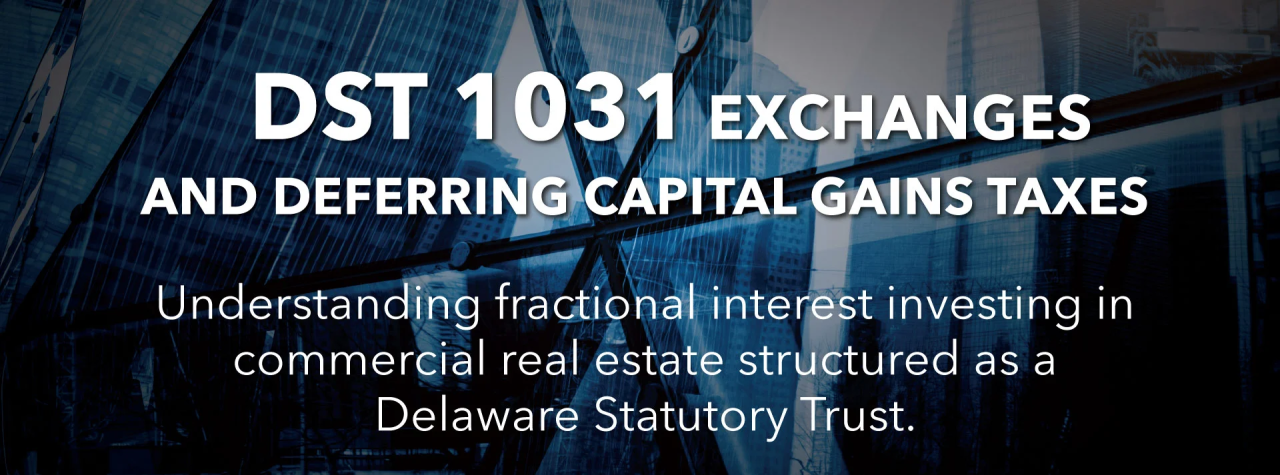
Navigating Delaware Statutory Trusts (DSTs) for Tax-Deferred Success
Four Springs Capital Markets
Where expertise in 1031 Exchanges and Replacement Properties provide advisers with solutions for a successful exchange.
In the intricate world of tax-efficient wealth building, seasoned financial professionals and accredited investors in the commercial real estate arena understand the value of strategic tools. One such instrument gaining prominence is the Delaware Statutory Trust (DST) and its seamless integration with 1031 exchanges. This article delves into the relationship between DSTs and 1031 exchanges, offering insights tailored for those navigating the complexities of fractional interest investing.
1031 Exchanges and Capital Gains Tax Deferral
At the core of this strategy lies the 1031 Exchange, an IRS-sanctioned mechanism empowering investors to sell a property and reinvest the proceeds into a similar property, all while deferring capital gains and depreciation recapture taxes. It’s a financial ballet where tax burdens take a backseat, and investment potential takes center stage.
Decoding Delaware Statutory Trusts (DSTs)
What is a DST 1031 Exchange?
A Delaware Statutory Trust (DST) is more than legalese; it’s a powerful vehicle for fractional interest investing in commercial real estate. Essentially, it’s a trust, established under Delaware law, holding 100% interest in real property. DST private placement offerings, facilitated by licensed securities brokers and investment advisors, make this structure accessible to investors.
Why DSTs for 1031 Exchanges?
DSTs shine in the 1031 Exchange arena, offering investors the opportunity to seamlessly transition from their current investment property to DST interests as their replacement property. The process is streamlined, and the tax benefits can be substantial.
The DST Advantage
In the realm of fractional ownership 1031 exchanges, DSTs are the preferred choice. Typically managed by large commercial real estate investment firms, they grant investors access to institutional-grade properties, spanning various sectors like industrial, medical, retail, and multifamily.
领英推荐
How DST 1031 Exchanges Work
Several key players make this tax-deferred tango possible:
The Operational Mechanism
Duration and Investor Considerations
Investment Period
DST investments align with 1031 Exchange guidelines, typically requiring a minimum two-year holding period. With target holding periods ranging from five to ten years, DSTs cater to investors seeking stable, long-term commitments rather than quick gains.
Tax Implications
Upon property sale within a DST, investors face a crucial decision: pay capital gains tax or defer it through another 1031 exchange, offering flexibility and strategic financial planning.
Ensuring a Seamless Performance
For accredited investors, the DST 1031 Exchange represents a compelling opportunity to build wealth while strategically managing tax obligations. As with any investment, due diligence is key. Consult industry resources, explore competitor offerings, and consider seeking advice from professionals in the field to ensure your investment strategy aligns with your financial goals.